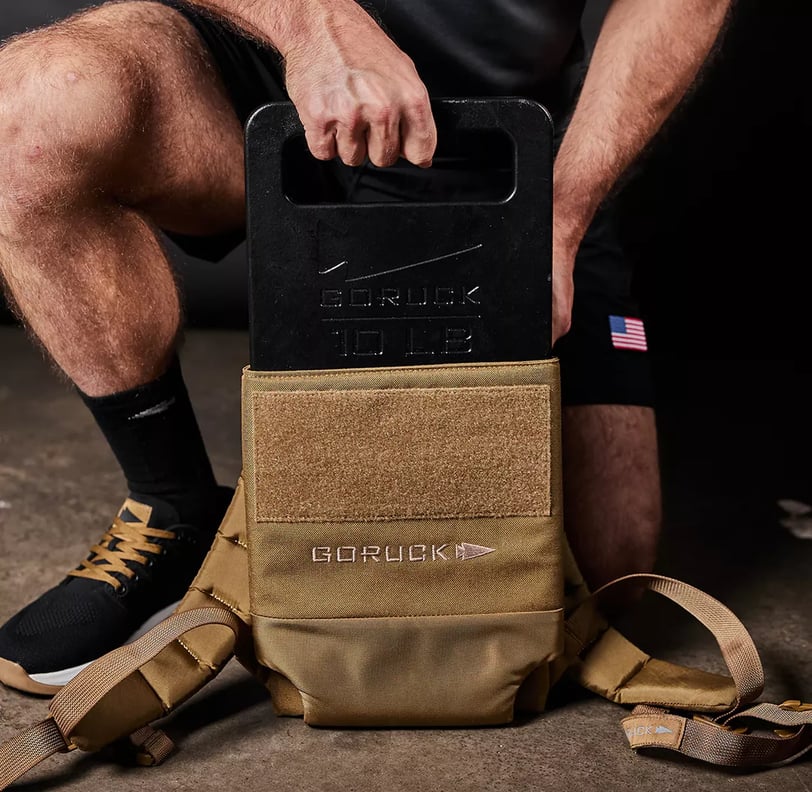Mastering the Art of Packing Your Ruck for Long Hikes
7/1/20254 min read


Understanding the Importance of Packing Your Ruck
Packing your ruck properly is essential for achieving comfort and stability during long hikes. The way you distribute weight in your backpack can significantly influence your overall hiking experience. An incorrectly packed ruck can lead to unnecessary strain on your body, resulting in discomfort, fatigue, and even injuries. Understanding the importance of organized packing can mitigate these risks.
When hiking for extended periods, the distribution of weight within your ruck affects your center of gravity. An unbalanced load can throw you off-balance, making it difficult to maintain an upright posture, which could lead to fatigue in your back and legs. This not only diminishes your enjoyment of the hike but could also increase the likelihood of slips or falls. By ensuring that heavier items are positioned closer to your back and lighter items are stored in front, you maintain a lower center of gravity, enhancing your stability on uneven terrain.
Moreover, the technique of packing plays a vital role in managing the overall volume within your pack. Accessing frequently used items should be easy, and a well-organized ruck allows for effortless navigation during breaks. By compartmentalizing your gear, you can avoid the frustrating interruptions of rifling through cluttered contents to find essential tools or snacks, leading to a more enjoyable hiking experience.
In light of these considerations, the relationship between packing technique and the overall success of your hiking adventure becomes clear. Prioritizing proper packing not only enhances physical comfort but also contributes significantly to your safety and efficiency on the trail. Therefore, mastering the art of ruck packing is vital for any avid hiker aiming to conquer long distances with ease and enjoyment.
Choosing the Right Gear and Accessories
When preparing for a long hike, selecting the right gear and accessories is crucial in ensuring both safety and enjoyment. The primary considerations should focus on weight, utility, and strategic packing within your ruck. An essential principle in hiking is to carry only what is necessary while still being equipped for various conditions you might encounter.
Starting with clothing, opt for moisture-wicking materials to keep you dry and comfortable. Layering is the best approach, allowing for easy adjustments based on temperature. A waterproof outer layer should always be included, as weather can be unpredictable. Footwear is equally important; select lightweight yet durable hiking boots that provide proper ankle support and traction. A good pair of socks can alleviate blisters and keep your feet happy over long distances.
In terms of accessories, a well-planned first aid kit is non-negotiable. Include band-aids, antiseptic wipes, and any personal medications. Navigation tools, such as a map and compass or a GPS device, should be easily accessible, as they are vital for keeping you on course. Additionally, packing a multi-tool can provide solutions to minor repairs or adjustments without adding excessive weight.
For food and hydration, a portable cooking system and water filtration method can significantly impact your experience, especially on extended hikes. Aim to pack lightweight, nutrient-rich snacks that can sustain energy levels. When packing your ruck, consider placing frequently accessed items, like water bottles or snacks, in exterior pockets or at the top of the pack to minimize disruption during breaks. Storing heavier gear lower and closer to your back enhances stability and comfort.
Strategic packing and selection of gear and accessories not only improve efficiency but also enhance the overall hiking experience. The right preparation allows hikers to focus on the journey ahead and enjoy the outdoor adventure fully.
Loading Your Ruck: Techniques for Balance and Comfort
Packing a ruck for long hikes requires a thoughtful approach to ensure optimal balance and comfort during your trek. One of the foundational techniques is to place heavier items close to your back. This positioning reduces the leverage effect on your body, allowing for better weight distribution as you navigate uneven terrain. When the heavier items are far from your center of gravity, it can lead to increased fatigue and discomfort, making your hike more challenging than necessary.
Utilizing compartments and pockets effectively can significantly enhance your packing strategy. By distributing weight across various sections of your ruck, you can maintain a level center of gravity. Place heavier items at the bottom and center of the pack, while utilizing upper compartments for lighter essentials. This arrangement helps to stabilize the load and reduces the risk of shifting, which can lead to an unbalanced carry. Additionally, utilizing side pockets for frequently accessed items can streamline your hiking experience, allowing you to grab necessities without disturbing the entire load.
Securing your gear is another key aspect that often gets overlooked. Use compression straps to tighten the load within your ruck, minimizing unwanted movement that can cause discomfort. Loose gear can shift while you hike, leading to instability and possible injury. To avoid this common mistake, ensure all items are snugly packed and take advantage of integrated straps and mesh pockets designed to hold gear in place. Finally, regularly assess your load throughout your hike, making adjustments as necessary to maintain comfort and balance. Mastering these loading techniques will enhance your hiking experience, allowing you to enjoy nature without the added burden of discomfort.
Tips for Maintaining Stability and Endurance on the Trail
Maintaining stability and endurance while hiking is critical to ensuring a successful and enjoyable experience. An adjustable ruck can drastically improve your performance, as proper load distribution plays a significant role in how comfortable you feel on the trail. Begin by ensuring that your ruck is fitted correctly before starting your hike. Adjust the shoulder straps, hip belt, and load lifters according to your body type. A well-adjusted ruck minimizes strain on your back and helps maintain your center of gravity, which is essential for stability.
As you hike, regularly monitor your comfort levels. Pay attention to any signs of discomfort or pain, particularly in the shoulders, back, and hips. If you begin to notice any imbalance or pressure points forming, taking a moment to readjust your pack can help restore your comfort and balance. It’s advisable to stop and make these adjustments during brief breaks, especially on terrain that requires more stability, such as rocky paths or steep inclines.
Managing fatigue on the trail is equally crucial for maintaining endurance. One effective technique is to incorporate regular breaks into your hiking routine. These intervals not only allow your muscles to rest but also give you a chance to assess your ruck’s fit and make any necessary changes. Hydration during breaks is vital, as staying hydrated helps prevent fatigue and keeps your mind alert, making the entire hiking experience more enjoyable. Additionally, switching your focus up by varying your pace can help manage energy levels, alternating between brisk walking and a more moderate pace can prevent burnout.
Ultimately, mastering the art of packing your ruck and maintaining an appropriate fit throughout your hike will ensure you maintain both stability and endurance. Consistent adjustments to your setup can provide the support needed, allowing you to navigate every mile with confidence.
